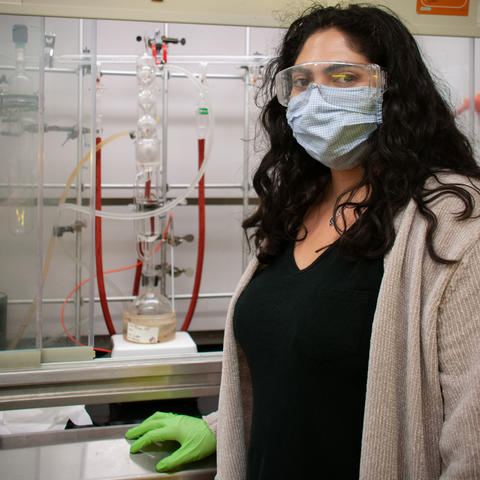
The touch, the porosity of cotton, the biopolymer of postdoctoral associate Ashlee Aiello’s life.
Cotton is the most abundant biopolymer (naturally produced material) on the planet. It’s an easily recyclable product that could be useful in carbon dioxide capture in the environment and scaffolding for dental composites.
But that’s if we make it porous. Cotton naturally isn’t.
At a previous postdoctoral associateship with the U.S. Naval Academy, Ashlee developed a technique for creating cotton materials that contain pores as small as 2-50 nanometers in diameter. Now at NIST, she’s exploring how changes in the fabrication process of porous cottons affect the results.
Ashlee tweaks the size and amount of pores in the cotton sample she creates, as well as the nonsolvent she uses in the process. Then, she analyzes its surface using a technique called inverted gas chromatography, flowing a gas over or through the sample and noting the way the two substances interact.
Follow us on social media for more like this from all across NIST!

